How to make Manhattan-style Fermented Pickles with Garlic and Dill! An easy step-by-step guide to making the most flavorful, crunchy, tangy pickles full of healthy probiotics with only 20 minutes of hands-on time! The pickle brine is like a “tonic” -drink a shot daily to support a healthy gut! Video.
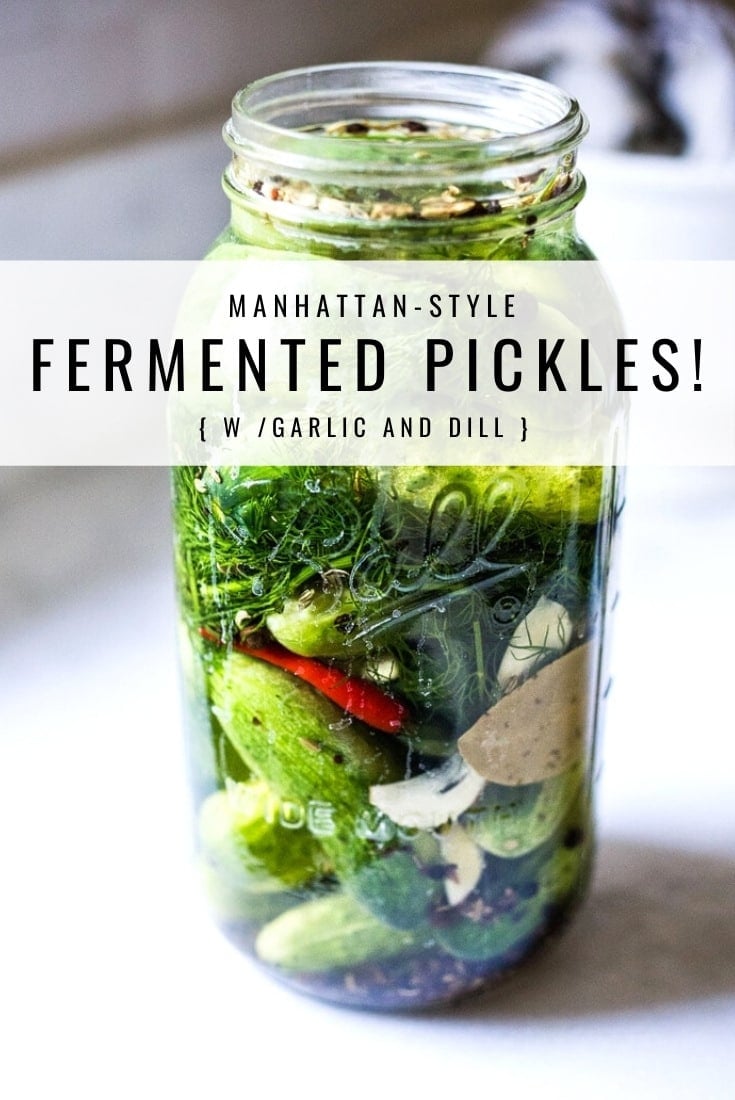
What happens when people open their hearts? They get better. ~Haruki Murakami
I’m excited to share this easy recipe for Fermented Pickles with you! If you are a crunchy pickle lover like me, you will be in heaven. Seriously, these are the best! These Manhattan-style “half-sour” fermented dill pickles are crispy, crunchy, flavorful, and oh-so alive!
Fermented in a salt brine, rather than vinegar, they get their delicious tanginess from light fermentation rather than vinegar.
Full of healthy, gut-healing, immunity-boosting probiotics these little guys are perfect as a low-calorie snack, or sliced and added to sandwiches or served as a tasty side.
Not only are they delicious and incredibly EASY to make, they are also incredibly good for us!
And as crazy as this may sound to some, the fizzy brine itself is like a healing tonic to me – I love to drink a shot of it- especially when I feel like my immunity needs a boost! So flavorful and totally energizing. Or try a Gin and Brine!
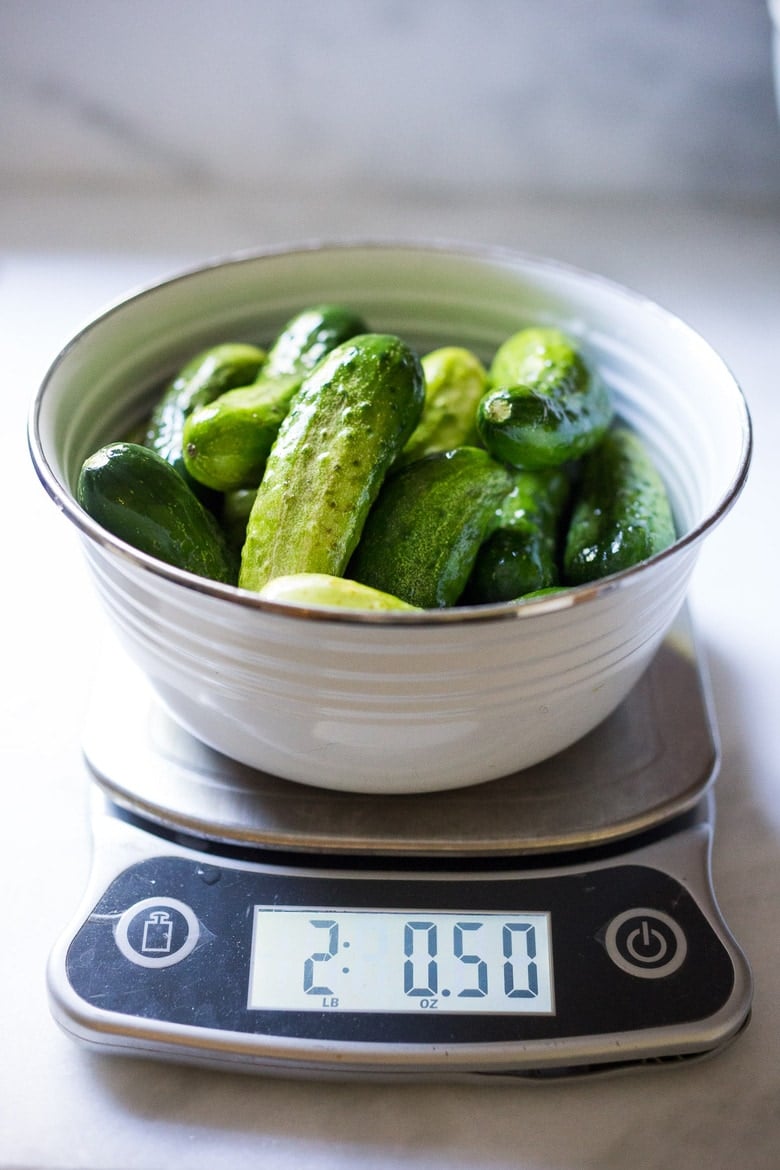
What you’ll need
- Pickling Cucumbers- Small and short (4 inches long) with thin bumpy skin, crisp texture, small seeds, a blocky shape and color gradient from light to dark. Varieties include Kirby, Calypso, Royal, Pickalot, National Picking, Adam Gherkin, Sassy, Eurika, Jackson, Boston Pickling, Northern Pickling… to name a few. You’ll need 2 lbs of “pickling cucumbers.” This recipe makes one large 1/2 gallon jar (or use two quart-sized jars) – a relatively small batch. Pickling cucumbers are most easily found at your local farmers’ market. Ask the farmers if they have “pickling cucumbers” they can help direct you to the right ones. Your pickles will only be as good as your cucumbers, so choose wisely! Make sure they are roughly the same size -about 4 inches long with 1 1/2-inch to 2-inch diameters – so they fit in the jar nicely and ferment at the same rate. I handpicked each one. They should be fresh and crisp with no soft spots.
- Salt-use fine sea salt, or fine Himalayan Pink salt
- Garlic and Onion – we load this up with 10-20 garlic cloves for the best flavor!
- Fresh Dill – use a big handful!
- Spices: Ground Turmeric ( adds fresh flavor) fennel seeds, mustard seeds, whole peppercorns, coriander seeds, whole allspice, dill seeds and celery seeds. Feel free to change or embellish! I added a couple of chilies for a little heat.
- Optional Tannic Acid: Bay leaves, grape leaves, oak leaves, or a couple of slices of fresh horseradish root. Cucumbers contain enzymes that soften them. To prevent this add a few bay leaves or a grape leaf to the jar.
- Two-Quart Mason Jar ( 8 cup mason jar)
- Fermentation weights
- Optional: Air lock, gasket, metal ring
How long does it take to ferment pickles?
These 3% Brined, half-sour crunchy pickles take 3-5 days of fermenting time.
The Brine: SALT TO WATER RATIO
- This recipe is a 3% salt water brine, which is considered “safe”. It equals 7 grams of salt per 1 cup of water. Or, 1 heaping teaspoon salt (1 1/4 teaspoon salt ) per 1 cup of water. This ratio allows one to drink the brine (like a shot) because it is not too salty and is designed for a shorter fermentation period ( 3-5 days). Crunchy, lightly fermented pickles!
- If you want a stronger brine for a longer ferment, feel free to go up to 4.5%. So for example, 3.5% Ratio= 9 grams of salt per 1 cup of water, 4.5% brine =10.8 grams of salt per 1 cup of water. For a 4.5% brine, half-sour pickles take 5-7 days, full sour pickles 14-21 days.
Fermented Pickles (step-by-step Instructions)
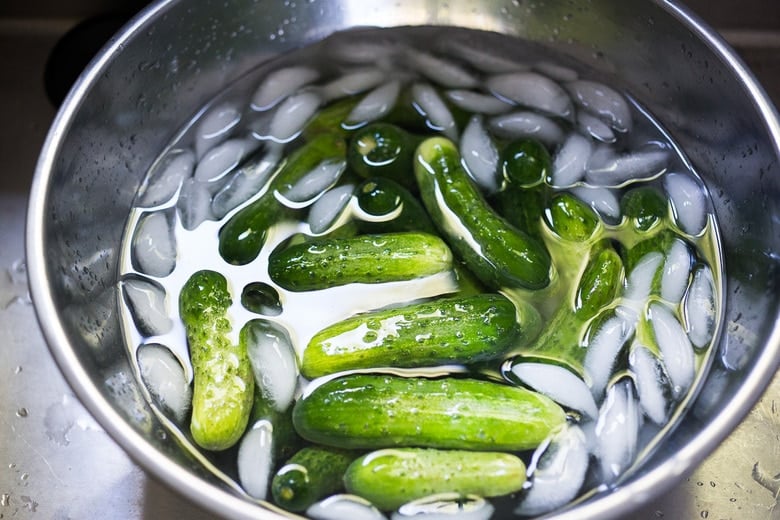
Step 1: Wash the cucumbers, slice off 1/16 inch of the blossom end, and soak them in an ice bath for 15-30 minutes to firm and crisp them up. There are enzymes in the blossom end that can make your pickles soft, so be sure to remove them.
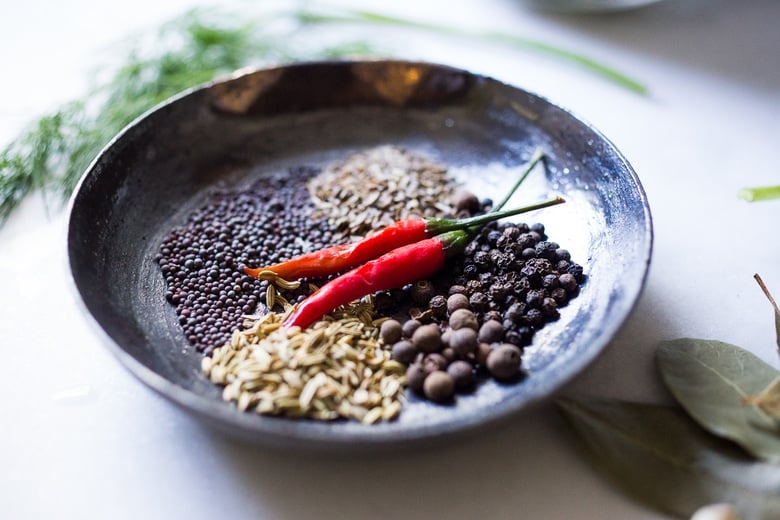
Step 2: Slice the garlic lengthwise and gather your spices.
Because these fermented pickles are left whole, you want the brine to be extra flavorful. I add a lot of garlic… 10-15 cloves, sometimes 20! Fermented Garlic is really good for the gut too!
Step 3: Place the spices on the bottom of the jar, then sliced garlic, fresh dill and bay leaves, and then add 2 layers of cucumbers, end on end, in a large two-quart jar (half-gallon). Press everything down.
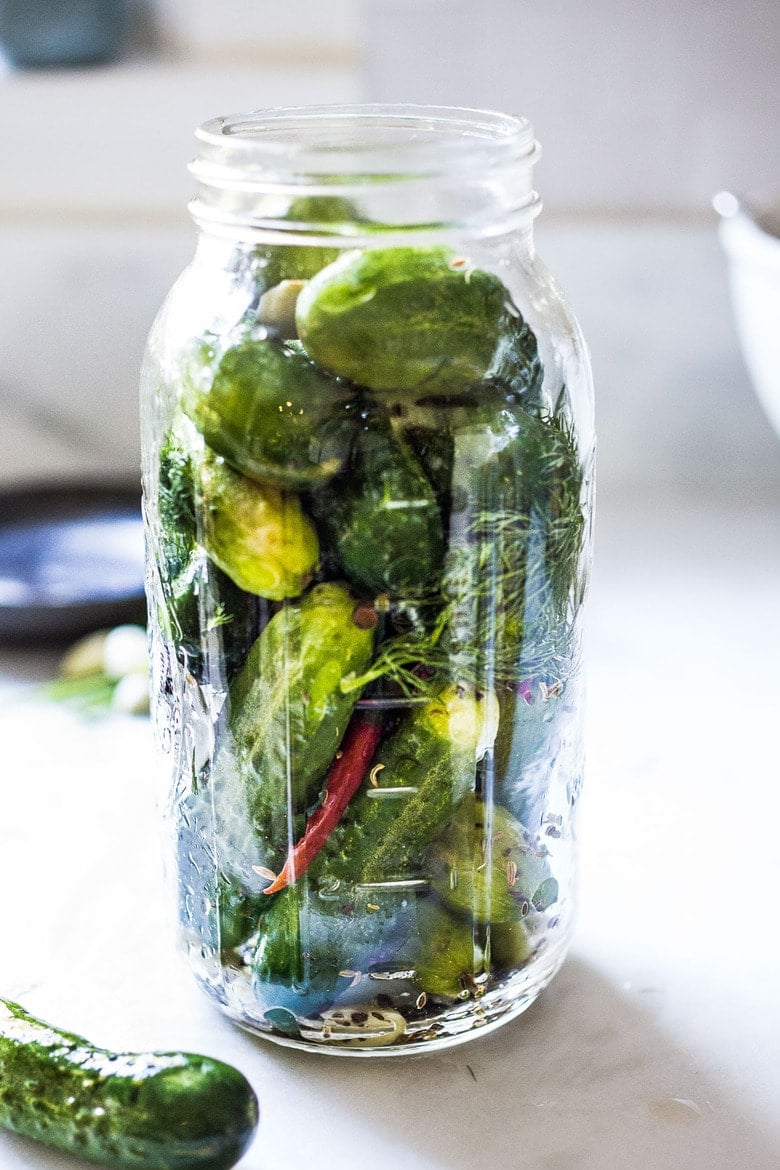
Step 4: Carefully measure and mix salt and water to create the 3% salt water brine- then pour this brine over the pickles leaving 1 1/2 inches of headroom.
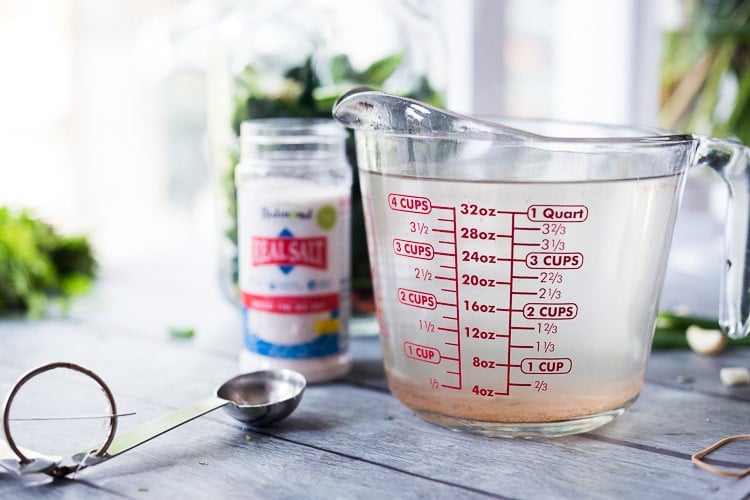
How salt works in fermentation:
- In a nutshell, using the right ratio of salt in fermentation encourages the growth of healthy bacteria while at the same time killing off bad bacteria. You want to be precise when measuring the salt and water in these kinds of recipes.
- Too much salt may kill off ALL of the bacteria -preventing fermentation.
- Too little salt will allow bad bacteria to keep on living. It is a fine balance. 😉
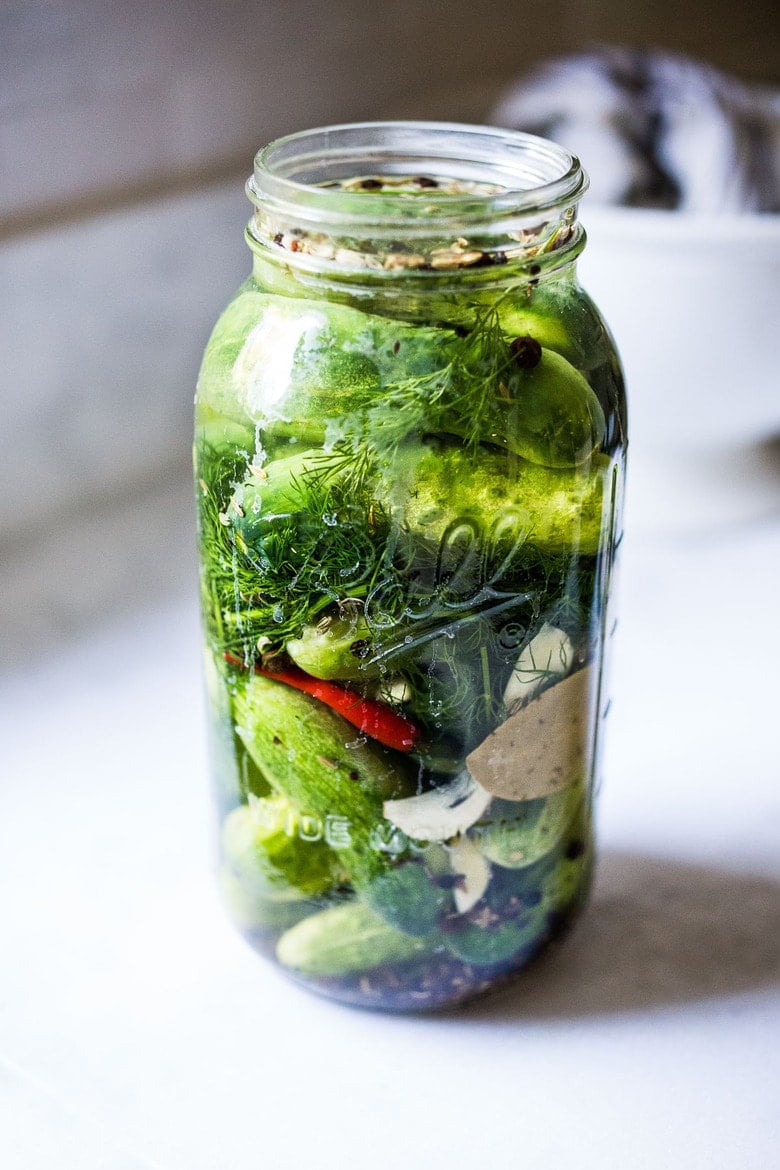
Step 5: Weigh down the cucumbers so they are completely submerged under the liquid, using a couple of fermentation weights, or a small zip lock bag filled with a little water (in a pinch).
MOLD: If the cucumbers or seeds are not submerged under the brine and become exposed to air- they can develop mold, so spoon any floaters out with a slotted spoon. Most seeds should stay submerged.
Step 6: Cover loosely with a lid or towel (to prevent bugs or flies from coming in, and to allow gases to escape) place in a bowl or pan to catch any overflow, and place in a cool dark place for 3-7 days, like the basement. You can also use and airlock lid- which allows air to escape, but nothing to fly in.
Step 7: Check after 2-3 days. Look for signs of life: bubbles/ or cloudy water. A cloudy brine is GOOD. Tap the jar and see if bubbles rise to the top. Check to see if any brine overflowed into the bowl ( both signs of life). This often takes about 3-5 days, I find 4 days is the “sweet spot”, depending on temperature. Cloudy brine is delicious and nutritious!
Step 8: Place the jar in the fridge to further slow the fermentation with a loose lid. They will continue to ferment very slowly and will keep indefinitely.
Expert Tips:
- Ferment at cooler temps (60-70F) to keep pickles crisp. If your home is hot, try placing in a cooler with ice. Take the temp of the brine.
- The longer you ferment them (unrefrigerated), the tangier they will get. But they will also get softer. I like them crisp, but you may want them tangier and softer. You can taste them at any point after you see bubbles.
- Smell: your ferment should smell tangy, garlic and fresh. If you notice anything foul or unpleasant, your ferment may have been contaminated: most commonly by dirty hands, dirty utensils, or a dirty jar.
- If you want to create a “fizzy” brine for drinking, tighten the lid, and burp daily if leaving out. You can tighten the lid in the fridge, but burp weekly. This will create a little pressure and give it some effervescence.
- Anything that touches air- may mold. Always fish out any floating spices with a slotted spoon to prevent this.
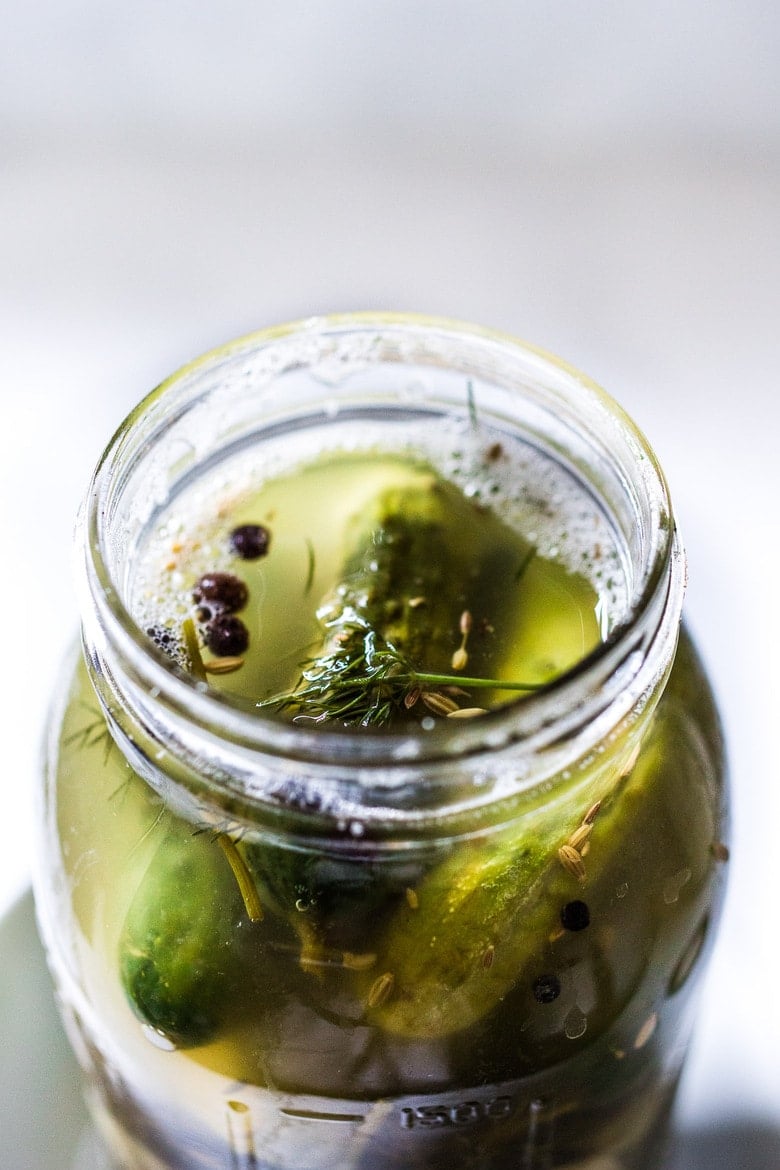
Once they are cold, give them a taste. They should be crunchy and flavorful! The brine is deliciously tangy, salty, and effervescent -so tasty and full of gut-supporting probiotics. The garlic is tasty too! Eat it!
I find myself often drinking shots of the brine! I also make this Gin & Brine Martini!
Let me know how you like this one in the comments below!
xoxoxo
More Favorite Ferments!
- Curtido & Cultured Salvadoran Slaw
- How to make Sauerkraut (Simple Cultured Cabbage)
- Beet and Cabbage Sauerkraut
- Cucumber Kimchi Pickles
- Turmeric Sauerkraut
More from Feasting at Home
How to make Fermented Pickles| 45-sec video
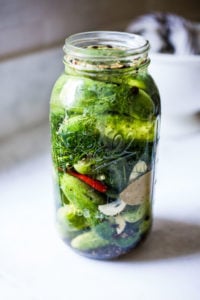
Homemade Pickles with Garlic and Dill
- Prep Time: 4 days
- Total Time: 4 days
- Yield: ½ gallon
- Category: fermented, preserved
- Method: fermented
- Cuisine: American
- Diet: Vegan
Description
How to make Manhattan-style, fermented Dill Pickles! A simple recipe for making the most flavorful, crunchy, tangy, garlic dill pickles with only 15 minutes of hands-on time. Full of healthy, gut-healing probiotics these little guys are perfect as a low-calorie snack, or sliced and added to sandwiches.
Ingredients
- 2– 2 1/2 lbs pickling cucumbers– all similar size ( 5 inches)
- 5 cups filtered water or tap water (that is not overly chlorinated)
- 2 tablespoons fine sea salt or Himalayan salt — or basically one heaping teaspoon fine sea salt (7 grams) per one cup of water, for a 3% brine (see notes)
- 1/4 teaspoon turmeric (optional, adds a “fresh” flavor)
- 1 teaspoon each: fennel seeds, coriander seeds, allspice, peppercorns, dill seeds, mustard seeds, celery seeds- and feel free to add more peppercorns!
- 10–20 garlic cloves, sliced (or double for extra garlicky)
- 1/2 onion, thinly sliced (optional)
- big handful of fresh dill
- 1–3 fresh red chilies – or dried arbol chilies, or add chili flakes (all optional)
- 3–4 bay leaves (or a grape leaf or oakleaf) – these are sources of tannic acid to help them stay crisp.
You’ll need a 1/2 gallon mason jar, crock, or 2 quart-sized jars- clean and sterile.
Instructions
- Prep Cucumbers: Rinse the cucumbers, remove 1/16-inch of the flower end of each cucumber (keeps them from getting soft) and place them in an ice-water bath, to crisp them up (15-30 minutes). Leave them whole.
- Make the brine: Mix salt (2 tablespoons) and 5 cups cold water until dissolved.
- Wash your hands, jar and any utensils. No need to sterilize, just clean!
- Assemble: In a large, clean two-quart mason jar, place all the whole spices into the bottom. Add the dill, garlic and onions or turmeric if using. With clean hands, pack one layer of cucumbers tightly, standing on end, then add the bay leaves, then add the second layer of cucumbers standing on end.
- Press everything down, leaving 1 ½ inches of headroom. Pour the salt water brine over the top and weigh down the cucumbers with fermentation weights so they are submerged under the brine. Remove any spices that may have floated to the surface (which can mold).
- Cover the jar loosely with a lid or with a cloth- basically, the pickles will bubble and you want air to be able to escape.
- Place the jar in a pan or bowl to collect any overflow and leave it in a cool dark place (60-70F) for 2 -3 days (a basement, or lower kitchen cupboard) and check for bubbles or overflow, indicating fermentation. Half sour pickles will take 3-5 days with crisp, white interiors. If is colder than 65F, it may take longer, if hotter, they will ferment faster. Full sour pickles will take 14-21 days (see notes for a stronger saltwater ratio).
- After 2 days, check for signs of life: bubbles, overflow, or clouding. Tap the jar, and see if tiny bubbles rise to the top. I usually ferment for 3-5 days. Longer ferments will yield tangier pickles but will get softer as they ferment, and lose their vibrant color. Up to you. You can taste them at any point after you see bubbles, and ferment longer if you like. The brine will get cloudy as it ferments- this is a good sign! Once you see active bubbles, you can at this point place the jar in the fridge, where it will continue to ferment, but much more slowly. Keep the pickles submerged.
- Once chilled, give them taste. They should be crispy and flavorful with a little tang. (At this point, if you want a tangier or softer pickle, you can absolutely pull them back out again and ferment for a few more days longer if you want.)
- If you like fizzy brine, tighten the lid, burping every week or so or try using an airlock. If you don’t want to think about it, give the lid one loose twist, so it’s on there, but gases can escape.
Notes
If you need more brine, make sure you use the same ratio- 1 heaping teaspoon sea salt per one cup of water.
If using a grape leaf, place it on the side of the jar, then layer the remaining ingredients.
If pickles turn out too soft- it may be due to too warm of temperature during fermentation, or the flower end wasn’t removed (the flower end of the cucumber has enzymes that can soften pickles).
Feel free to use 2, quart-size jars, dividing cucumbers, spices and brine between the jars.
BRINE: This recipe is a 3% salt water brine, which is considered “safe”. It equals 7 grams of salt per one cup of water. I’ve had really good luck with this ratio – and this ratio allows me to drink the brine (like a shot) this is really healthy – full of good gut-supporting bacteria!
If you want a stronger, saltier brine, feel free to go up to 4.5%. For a full sour pickle (14-21 days) use a 4.5% brine.
- 3% ratio = 7 grams salt per 1 cup of water. (1 1/4 teaspoon fine sea salt, per 1 cup water)
- 3.5% Ratio= 9 grams of salt per 1 cup of water. (1 1/2 teaspoon fine sea salt, per 1 cup water)
- 4.5% ratio 10.8 grams of salt per 1 cup of water. (2 teaspoons per cup of water)
Cutting the Cucumbers: I recommend leaving them whole. The texture is much better. After your first successful batch, feel free to experiment.
Nutrition
- Serving Size:
- Calories: 16
- Sugar: 1.3 g
- Sodium: 297.4 mg
- Fat: 0.2 g
- Saturated Fat: 0 g
- Carbohydrates: 3.7 g
- Fiber: 0.5 g
- Protein: 0.7 g
- Cholesterol: 0 mg
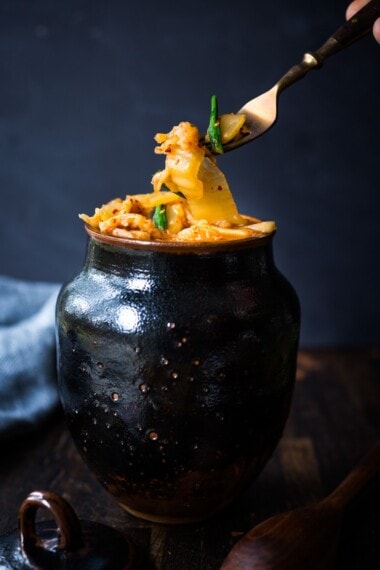
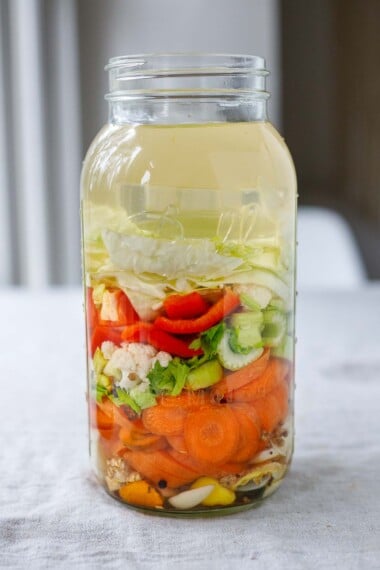
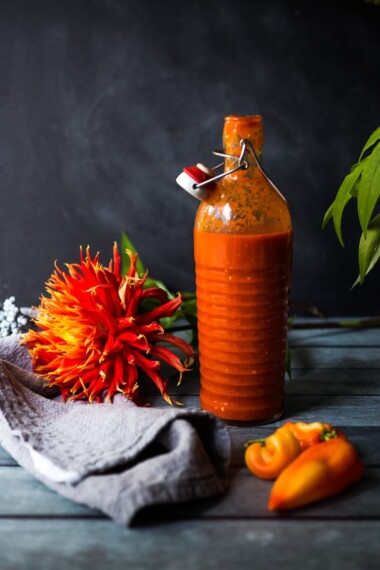


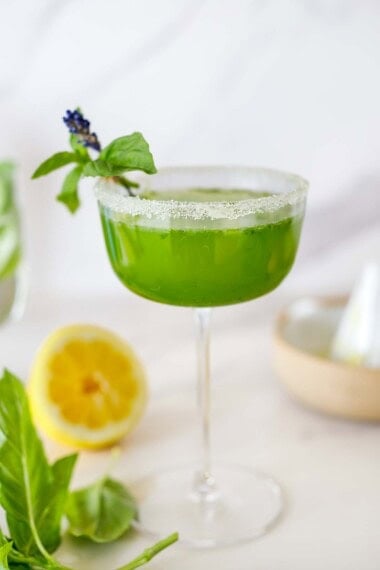
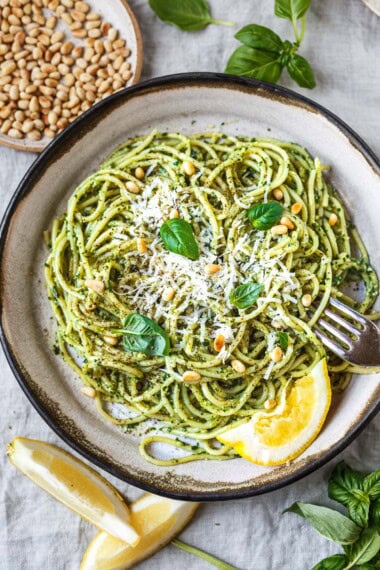

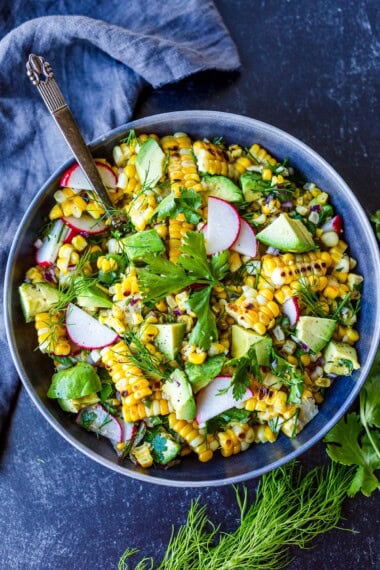
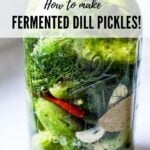
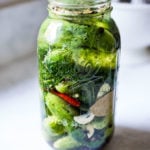
Doing this now. Thanks for the recipe! But you never say when they can be eaten.
Any time after you see bubbles. 🙂 I like to chill them first.
Done! How long should I wait before I can eat them? I’m so excited to try them 🙂
Wait till you see bubbles, refrigerate, then eat after they are cold. 😉
I’m concerned about a white film that has developed on top of the brine after 7 days. Not much fizz.
Hummm. That sounds like mold. No bubbles when you tap the jar? Feel free to email a photo if you like? sylvia@feastingathome.com
I’ve made these pickles and they are fermenting nicely. Could I “can” them in boiling water bath for long term storage? I have no room in my fridge for the 7 large jars I made ….
If you “can” them you will kill all that healthy bacteria- basically defeating the purpose of fermenting.
I tried this recipe and although the pickles are edible, they’re not that great. I’m sure the recipe isn’t at fault, and I’m ready to try again, and hopefully will do better the second time around.
First issue: The brine never got “fizzy” (although it is tasty!) Maybe this time I should tighten the lids and “burp” but then do I not leave the lids loose at the beginning? Or do I tighten them right away.
Another problem is that the pickles never got done all the way through. The centers are a different (lighter) color. Did I not leave them out long enough before refrigerating them? (It was 4 days.)
Finally, they aren’t tangy enough. I’m thinking increase the salt-to -water ratio and add more garlic? And maybe use the 1 quart jars instead of the 2 quart jar?
Any advice would be greatly appreciated!
Hi Lisa, did you see any bubbles? What was the average temp there? For more fizz, tighten jars and burp daily. For more tang, ferment longer, you can taste as you go. For more “done” in the center, also ferment longer. You can always pull them out right now from the fridge, and keep fermenting for a couple more days… I wouldn’t increase the salt, but up to you. Feel free to add more garlic. 😉
Many thanks for your response. So the temperature in the basement is probably around 65 degrees, and I did see some bubbles the first couple of days. I’ve just pulled the jar from the fridge and will let it sit out for a few days. And for the next batch, more garlic, keep the lid tight and “burp,” and let it sit in the basement longer!
Let me know how it goes Lisa!
I love this recipe! After only one day, here is the fizz and the cloudy liquid. I had to try one. Very good, very crisp. I cut the cubes in 1/2 inch pieces. I used garlic, pepper corns, dill, allspice, and a dash of cherished red pepper flakes. Very tasty! Thank you!
Rather good pickles I leave out the dill fresh cucumbers from our garden started fermenting very fast lots of bubbles very cloudy liquid in jar lots of stuff settling on jar bottom so I shook it twice a day rated one every other day and it smelled like the neighborhood deli pickle barrel back in Brooklyn muy bien gracias
Going to try this tomorrow. Once they get cloudy and bubbles appear, how long will they last in the frig?
Indefinitely. 6-12 Months 🙂
The ingred list just days allspice, but now I see the photo looks like whole. Can I use ground instead?
I’ve always use whole allspice in pickling, but I don’t see why ground wouldn’t work, flavor-wise. Your pickling liquid may look murky if you are ok with that?
I received a jar of pickled cucumbers as a gift, but they are made with a different amount of salt. 1/4 cup in 20 cups of water. There are 12 tsp in a 1/4 cup. Your recipe would equal 30 tsp per 20 cups of water. I see bubbles and the lid had pressure. Is this a strong enough solution of salt to work. I know salt has been use for thousands of years to preserve food. but what strength is necessary? What keeps clostridium botulinum from growing? Do you think these fermented pickles are safe? Thank you very much.
Hi Robert. Is your jar of pickles refrigerated or shelf stable? If shelf stable, this is most likely “canned” not fermented. This recipe is a 2.5 % saltwater brine, which is considered “safe”. It equals 6 grams of salt per one cup of water. I’ve had really good luck with this ratio – and this ratio allows me to drink the brine (like a shot) because it is not too salty. If you want a stronger brine, feel free to go up to 3.5% So for example, 3% ratio = 7 grams salt per 1 cup of water. 3.5% Ratio= 9 grams of salt per 1 cup of water. Do what you feel comfortable with!
I don’t have a basement. Is it still possible to make these?
Yes, place in a cool spot in your kitchen…lower cabinet?
Looking forward to trying this recipe. Can I use kosher salt instead of sea salt?
Yes, use a pinch more. 😉
Thank you so much for sharing this great recipe!! I have been making pickles using the canner/ vinegar method all of my life, since I was 12! But over the years I have really wanted to get the benefit of probiotics in my vegetables. I have just finished making my first batch of these and they are so lovely. I really appreciated that you specified the salt ratio as other recipes I’ve tried did not work for me. I happen to have wild grapes in my back yard and included 1 large leaf in each as you suggested and the pickles are indeed crispy! I also added some slivered small carrots and baby green beans which I had fresh in the garden and they are delicious. Next time I will increase my dill and also add more garlic as you suggested. I will never go back to the canner/ vinegar method now that I know how easy this is!
Yay!!! Glad you like this!!!
I had some pretty fat pickling cukes, so sliced them into spears. The texture isn’t super crunchy, but the flavor is outstanding. I took your suggestions that the brine should be very flavorful to heart! I used tarragon instead of dill because that’s what I have in my garden. I used a spicy fresh pepper in two of the jars, which was delicious; I used a dried ancho pepper in the third jar to experiement, and it added a nice flavor. Other spices used include allspice, pepper corns, mustard seeds, bay leaves, and chili pepper flakes; I also used a good amount of garlic! I think the key here is the salt-to-water ratio; it’s perfect. I’ll use this recipe again, thank you so much!
Thanks Mary, glad it worked for you!
the first time i burped it, i accidentally opened the lid fully. is this a problem?
Not at all!
After eating all the pickles, can I reuse the pickle juice left over and add more cucumbers to it?
I’ve tried doing this with unsuccessful results. But I’ve also heard mixed answers here. Some say yes it works, others say no. I’m not sure if the cucumbers soak up some of the salt, leaving the remaining brine, maybe not salty enough? If you do try ti, will you let me know?
Can you use other cucs that aren’t the pickling cucs? Large ones/cut up? Tons of cucs this year in garden. Is it really necessary to weight it? can you just cover with fluid and make sure pickles are packed down?
Yes! that should work fine, just make sure salt to water ratio is accurate. Feel free to try other pickles, I personally have only tried pickling cukes and Turkish cucumbers, so not sure how those will pickle, but worth a shot!
Hello. Can you use the Persian cukes? They are small and a bit smoother as far as the skin…
You can, but the thin skins will not turn out quite as crispy in the long run. They do ferment though, but will have a different texture.
Could I can after the fermentation by replacing 1/2 of brine with vinegar then pressing in hot bath?
So Richard, basically canning it? Not my area of expertise….sorry. I think the hot bath would kill all the probiotics?
I just made these and didn’t have enough space in my half gallon jar to fit all 6 cups of water. It was more like 5 cups total. Do you know if this will make it not work since the salt ratio won’t be right? Thank you!!
Oh! I’d mix the one cup (that has all the salt) with the 5 cups of water. Then Pour that into the jar so the salt ratio is right. You wont use all of it- but that is ok. I see the issue and will adjust the recipe.
Recipe looks good. Love the huge amount of spices/herbs used.
Question 1: How do you figure nutrition for the fermented cukes. I have read that fermenting really changes the carb/nutrition content. Have this problem with all my ferments such as cabbage slaw or beets or greens (mustard, kale, wild)
Quiestion 2: If I slice the cukes, will this change the brine or spice amounts?
The TRUE nutrition is tough to calculate here. This nutrition calculator doesn’t take into account the fermentation process. Slicing wont change the ratios. 😉
I have only some pretty big slightly older Kirby cukes, but I’m hoping it will turn out okay. It’s all an experiment.
Try it?
If we double the brine should we also double the spices? First timer 👍
You could for extra flavor. Are you doubling the cucumbers?
This looks great! I have a bunch of cucumbers from my garden, but they’re a bit bigger. Would it work to cut them into spears? Thanks!
Love the river stone idea!
I think so?? Give it a shot, at least with a small batch.
Tried these last week. Took 2 days for the jar to start clouding. I left them out 2 more days then put in fridge for one day. I couldn’t wait any longer. They came out fantastic. I started another jar two days ago. Thank you for the recipe.
Awesome Terry!
Excited to try this! What about adding other vegetables – I have about 1.3 lbs of cukes from my CSA, and could bulk up to 2 lbs with summer squash spears, but do diff vegetables need different handling when fermenting? Also, I don’t have dill! Ha! But I am growing tarragon, thyme, sage, basil…are there other herbs that would be nice to pickle with, or should I try to find dill somehow? Thanks so much!
I love the idea of adding other things. Have you made the basic recipe already? It might be a good idea to do this first to get the basic idea? Dill goes so well here, but feel free to play around with herbs. Tarragon would be lovely!
I’m going to try this recipe! Do you know how long they’ll last in the fridge?
they last for months!
how long exactly
Sorry Tom, I don’t know exactly, because they are usually gone in a week here. Theoretically, though indefinitely. Up to a year?
My pink Himalaya sea salt is very rough like small gravel. Do I have to grind it before adding to this recipe?
I would- just to get the measurement right.